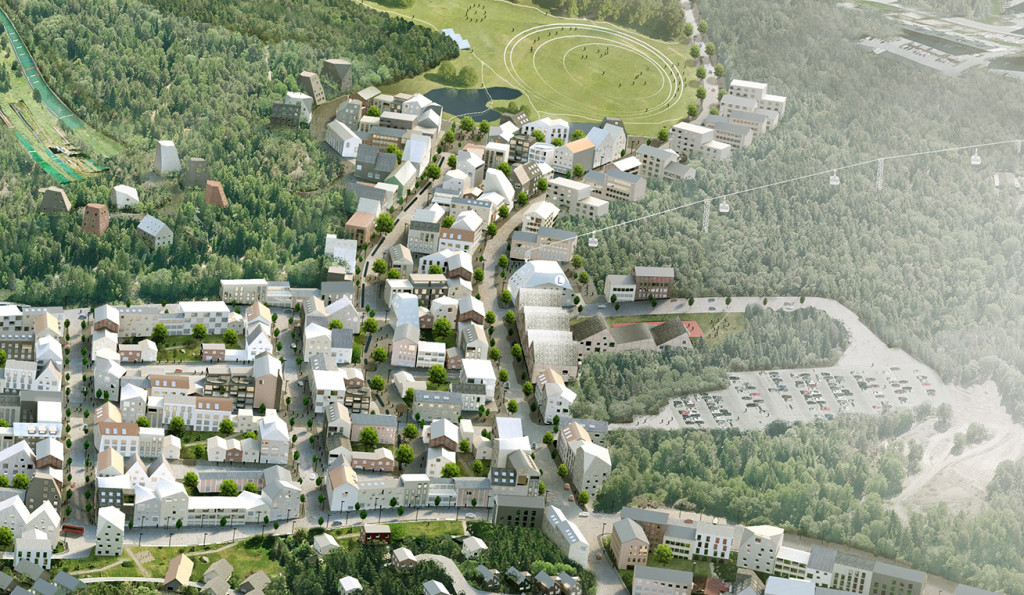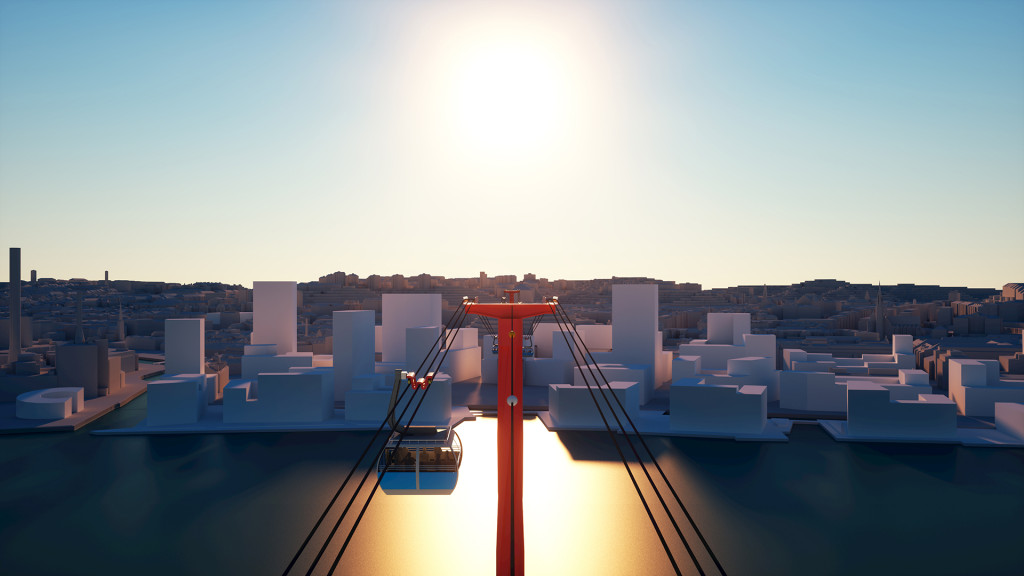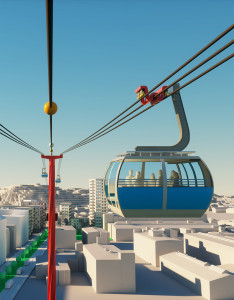Upon turning 400, Gothenburg intends to celebrate by completing a cableway that spans the Göta River. Thousands of people are expected to make their daily commute on the cableway.
The idea of a cableway for public transport was presented in detail at Transportforum in Linköping. Travel in Gothenburg often first requires a trip to the Brunnsparken station and traffic hub, or to Gothenburg’s central station, even if you don’t want to go downtown. Traversing the city is difficult.
“We need crosswise links, and a cableway across the Göta River is consequently a great solution”, says Emma Josefson of the City of Gothenburg.
The idea of a cableway in Gothenburg grew out of public discussion in advance of the city’s 400th anniversary. There are many who want to see a cableway across the river by then.
Ambitious plans in Gothenburg
Planning for a cableway has already come a long way, and the city now hopes that everything will be ready for its big celebration in 2021.
“Gothenburg has barriers that make it difficult to expand other means of public transport, but make cableways a good fit. We want to built them in order to promote sustainable travel, and it is important that we not restrict or impact maritime travel, which a cableway does not do”, says Josefson.
In just a few years, the cableway has progressed from being just an idea. Now the City of Gothenburg is fully committed to the possibility of having a cableway in place by 2021. The cableway is expected to divert 5000–10,000 passengers from other means of public transport every day. The project director would be happy to see one or more additional cableways in place within the next several years.
Though people often associate cableways with ski slopes, there have been other sorts of cableways in Sweden since the 1800s, the first one in connection with the Falu copper mine. Today there are many examples of cableways in other countries. Cableways intended as a temporary solution to take a few people from one place to another were built in London before the Olympic Games. They proved so successful that they were left in service after the Games. Cableways are also being used for public transport in places such as Bolzano, Ankara, Caracas, New York, Boston, Hong Kong, Singapore, Coblenz, Sochi, Lisbon, and Rio de Janeiro.
There are three reasons for a cableway to become a reality. It may be that there are areas that are difficult to access, or that a cableway has been built for some event and is then left standing. A third reason is, as is the case in Gothenburg, that the objective from the start is a permanent public transport solution incorporated into city planning. Cableways will be better planned in such cases.
Lofty plans in Sollentuna as well
Sollentuna, a municipality in Stockholm County, is another municipality where plans for a cableway for public transport are moving towards becoming reality within several years. Compared with track-based transport, cableways are seen as being relatively inexpensive; they require little ground area, do not pollute the air, are energy-efficient, and are relatively quiet.
“Cableways also enable high trip density at roughly 20 km/h, and are very reliable. In addition, cableways offer climate-smart travel and traffic safety, which is why we are interested in seeing cableways used for public transport”, says Sollentuna Municipality Project Manager Lisa Brattström.

Artist’s rendition from Sollentuna Municipality. Illustration: Dinell Johansson/Sollentuna Municipality.
Numerous small gondolas offer high capacity, and in Sollentuna a gondola is planned to depart every 20 seconds.
Sollentuna municipality is growing by 1200 inhabitants per year. Some 10,000 new residents are expected to live near the ski slopes by Lake Väsjön, and it is possible to run the cableway straight across the lake.
“We thought that a cableway would be brilliant for public transport here, better than buses. Sollentuna is also a rather large car-based municipality”, says Brattström.
Advantages of cableways:
- high capacity
- high trip density
- reliable
- safe operation
- nearly silent
- short construction time
- energy efficient
- comfortable
- climate smart
- small ground footprint
Disadvantages of cableways:
- less flexible than buses
- poorer coverage than buses
- one maintenance week per year
- may be perceived negatively if one has to share a gondola with an unpleasant passenger
- not for those afraid of heights
- curved cableways are problematic, or at any rate expensive.
This article is a report from the VTI conference Transportforum 2016. You find more information about the conference here (in Swedish).








Follow us: